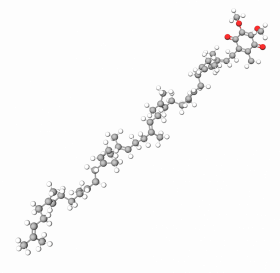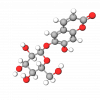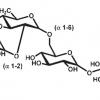The group of ubiquinones can be found nearly everywhere in living nature. The length of the side chain may vary according to different species. In humans, a ubiquinone with a side chain length of 10 units is found predominantly, which is also called Coenzyme Q10. It is a yellow or orange, crystalline powder and its structure is similar to vitamin E and vitamin K, but it has different and unique functions.
Coenzyme Q10 is referred to as a vitamin-like antioxidant and is naturally found in nearly every living cell in the human body as an essential mitochondrial component that plays a key role in the respiratory chain. This ingredient may assist in fighting off the damaging effects of free radicals and maintain the beautiful radiance of your skin.
Modern cosmetics aim to reduce the signs of aging in the skin, where oxidative stress is thought to play a major role. By virtue of its unique functions, Coenzyme Q10 is an attractive active ingredient for such cosmetic formulations. It penetrates into living cell layers of the epidermis. In porcine skin 20% penetrated to the epidermis and 2% to the dermis. In the dermis, it is reduced from ubiquinone to ubiquinol, the active antioxidant.
Our skin is attacked by various oxidative stresses from outside such as UV radiation and from inside by molecules generated during cell metabolism. To cope with them the body disposes of different enzymatic and non-enzymatic (antioxidant) mechanisms. Coenzyme Q10 is an important antioxidant acting in the lipid parts of the cells together with vitamin E and vitamin C. The coenzyme Q10 levels in the epidermis are ten times higher than in the dermis.Coenzyme Q10 is made naturally in the body and supports energy production, so it safe ingredient for skincare applications. In addition, it acts as an antioxidant and anti-inflammatory and can stimulate the immune system. Although Coenzyme Q10 is cancer-preventative, it is suggested for use as a supplement to prevent age-related damage. In addition, it is thought to repair sun-damaged skin, energize new cell growth, and possess firming properties.
Ingredients
Biological function
From Coenzyme Q10 electrons flow over cytochromes to molecular oxygen. With the electron transport system of this chain, the human body generates the energy necessary for life. Thus, the highest levels are found in organs with high rates of metabolism like the liver, the heart, and the kidney.
The healthy human organism can synthesize sufficient amounts of coenzyme Q10, however, under certain conditions and with various diseases Q10 deficiencies have been described. Therefore it is used as a pharmaceutical substance in cardiology for various heart diseases. Furthermore, Coenzyme Q10 acts as a potent antioxidant in the lipid phase of cells. Coenzyme Q10 itself has a lipophilic character and thus is concentrated in the sub-cellular structures.
Prevents oxidative effects in human skin cells
Prevents oxidative stress with hydrogen peroxide increases the activity of phospho-tyrosine kinase and decreases the levels of glutathione in cultured keratinocytes. The severity of the reaction could be significantly alleviated by pre-treatment with Coenzyme Q10. Furthermore, oxidative stress by UVA irradiation, measured by a reduced mitochondrial membrane potential was suppressed by a pre-treatment with 0.3 % Coenzyme Q10.
Protects from chronological and photoaging of dermal fibroblasts
The decreased content of hyaluronic acid in chronologically aged skin was significantly increased by treatment of human keratinocytes with Coenzyme Q10. Furthermore, the proliferation of these artificially aged cells increased by 20%. The aging sign of degraded collagen fibers by high levels of collagenase under UVA irradiation was reduced by 50% due to a pre-treatment with Coenzyme Q10.Reduces the effects of photoaging
The depth of deep wrinkles around the eyes could be significantly reduced by 26% with a product containing 0.3% Coenzyme Q10 after 6 months compared to the basic product without the active. Casts for quantitative microtopography were evaluated. Furthermore, the corneocyte size, which normally increases with age was reduced on the forearm skin.











